Morsiple Messages: A Daguerreotype Multiple Exposure Method

In early spring 1839, Paris was abuzz with excitement in connection with a recently published letter, in which the invention of photography was confirmed by reliable sources. The world was now waiting for the French government to work out a deal with its inventor Louis J.M. Daguerre for details of the daguerreotype process to become public.
At the same time, another newly invented mode of communication was making its first appearance on the scene; Samuel B. Morse arrived in Paris with his telegraph and code that went along with it. Upon realizing how thrilled everyone was at the prospect of photography, Morse was at first apprehensive and thought that his own invention would not receive the attention it was due. Nonetheless, he had to see things for himself, and wrote a letter to Daguerre, requesting a meeting, and promising to show his apparatus in exchange for a glimpse at some images made via chemical means by the aid of camera obscura.
This momentous meeting took place on March 7th, a full five months prior to the world learning how daguerreotypes were actually made.
Needless to say, Morse was impressed to the fullest extent possible. Well-made daguerreotype plates are magnificent and have an irresistible presence when one holds them in hand. As it happens, that was the first confirmed instance of any American actually seeing a photographic image. Moreover, two days later Morse wrote a letter back home containing high praise for what he saw, and this first-hand account was the first time Americans had a real confirmation of what was looming upon the horizon.
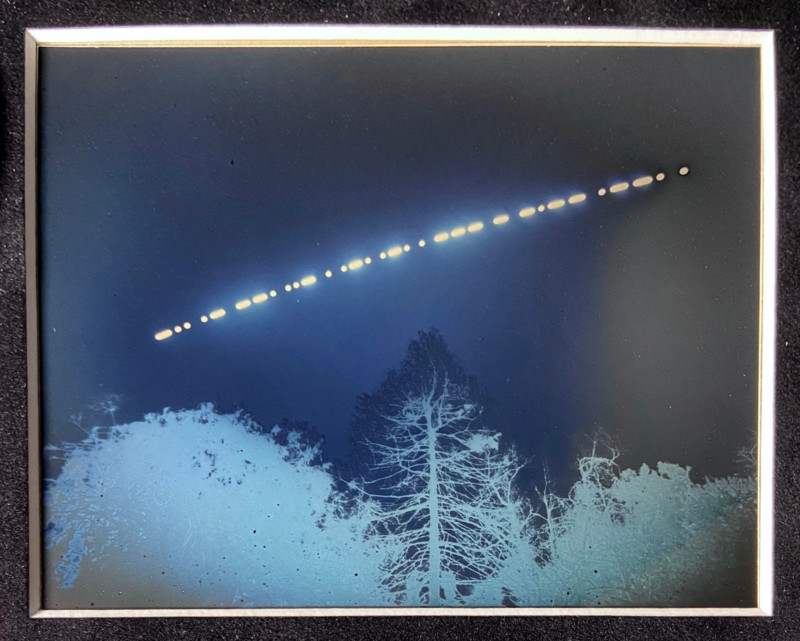
Project
Connection to Nature holds a seminal role in my thinking, and never seizes to bring forth inspiration. This time I wanted to turn my attention to the relationship between the Sun and Trees; those beautiful green giants that are so often overlooked, taken for granted, or treated as a simple commodity. Each day the sun passes over billions of trees all around the globe, radiating life-giving energy their way, and giving them strength to produce the oxygen we survive upon.
I set out to capture brief glimpses of that interaction through long exposures. Having never seen examples of this having been done, I didn’t have much as far as expectations of final image appearance. My favorite daguerreotype medium though, with its average ISO of 0.1, seemed like a natural choice for trying this out.
Furthermore, in the 6 years of working with daguerreotypes I never yet tried to use Daguerre’s original method of only fuming the plate with iodine. The addition of bromine as a sensitizer came later and added a lot more light sensitivity, but for this project, the slower single-fumed plates seemed like the way to go.
After a few initial tests on less challenging subjects than our closest star, I started setting my camera behind trees, opening the shutter, and the sun made its way into my camera interrupted only by organic branch shapes. Results outpaced my expectations, and I felt free to experiment with a wide range of appearances that the daguerreotype medium is capable of.



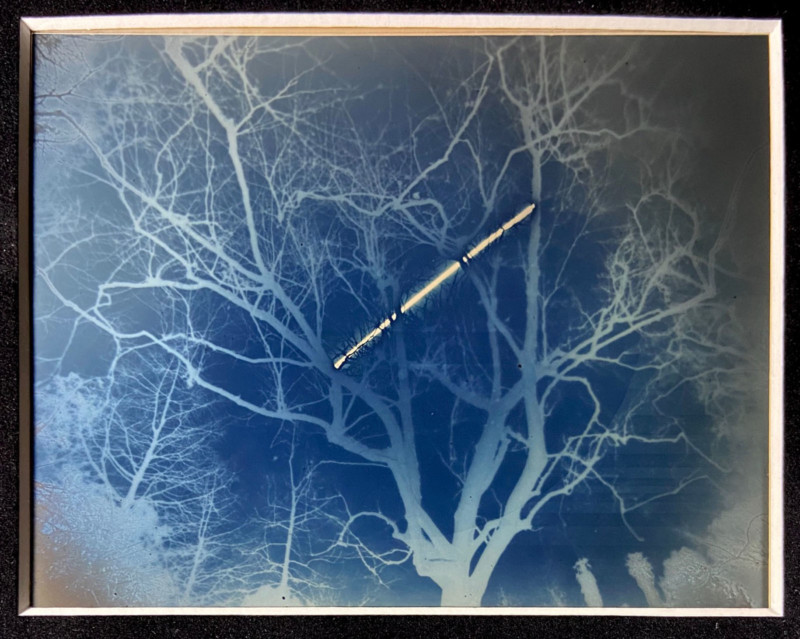

Late one night, while examining the above images, I paid more attention to the breaks in the sun’s path, and the balance of those breaks against the brightness of areas where the sun was visible. It was at that moment that by free association I likened them to Morse code, as if hidden messages were being passed between my subjects.
In what seemed like a natural next step, I connected my quest to that famous historic meeting described above and was strongly compelled to dedicate the next month to working on images in which Morse code, daguerreotype, sun, and trees were employed to make visual statements.
My first step was to look up the rules and alphabet of Morse code, which are posted below for those inquisitive enough to translate suns messages for themselves. Exposure times and intervals were next to figure out, and that required nothing else but basic algebra involving the sun’s visible diameter and speed of travel.
Essentially the images below are multiple exposures timed in accordance to Morse code, and so, to honor the man who first brought us the possibility of instant cross-oceanic communication, I believe ‘Morsiple Exposure’ is a good name for such a technique, and one that is fun to pronounce.
Pointing a camera directly at the sun for 3-5 hours is bound to present a few difficulties, and so my project involved a number of reshoots. Seeing how realistically only one word can be worked on per day, I decided to hedge my bets and worked on the same word with 2-3 4×5 cameras at a time, taking off and replacing lens caps on them in succession and in accordance with a timer.
The first plate posted in this article spells out the word daguerreotype. That was the longest and hardest exposure, which took me 4 days to really get to where I like it, and each day 3 cameras were used. In Morse code, the word daguerreotype consists of 32 characters, and this means that altogether the lens cap operation was performed a total of 768 times while only working on this one word. Should you ever try this, I highly recommend having a chair not far from your tripods.

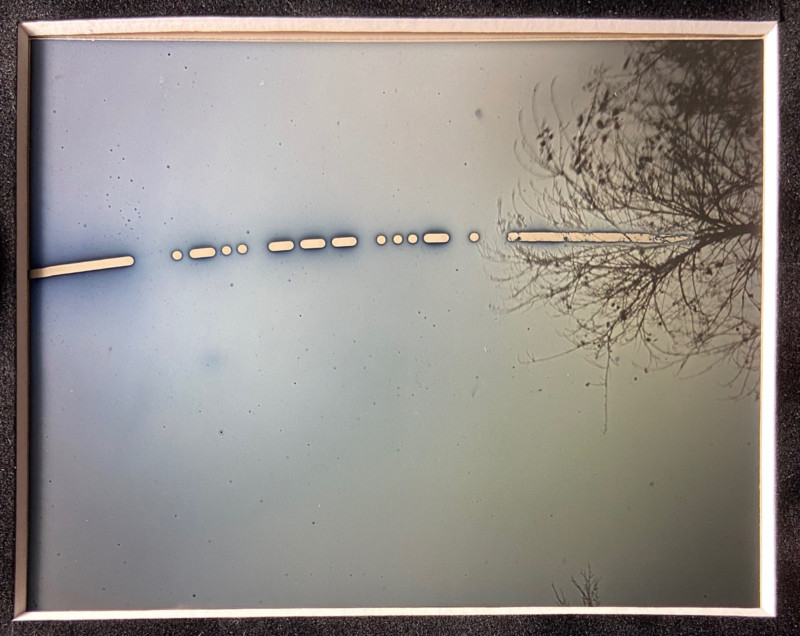
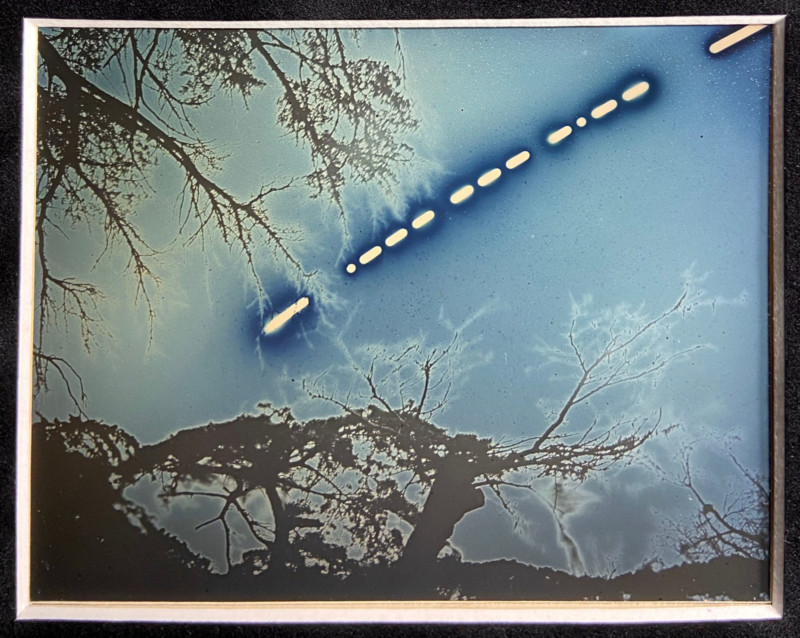
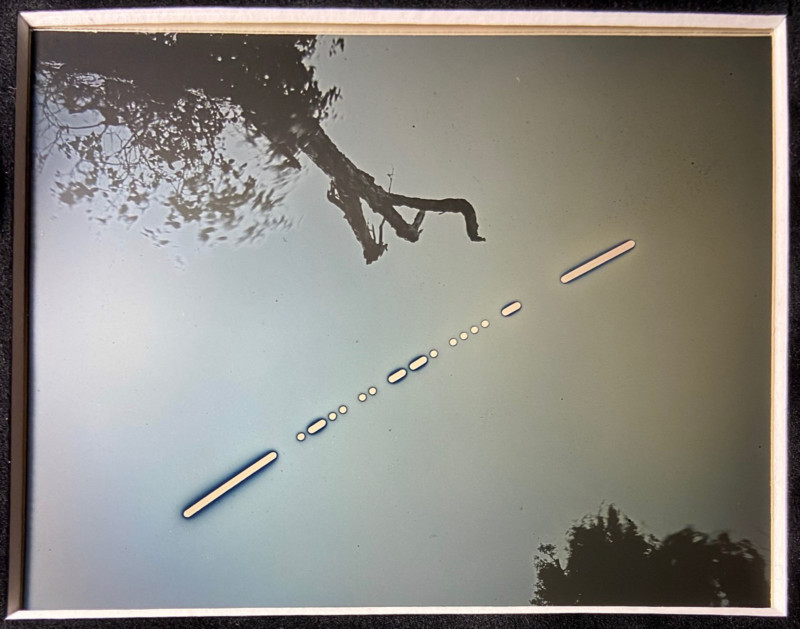



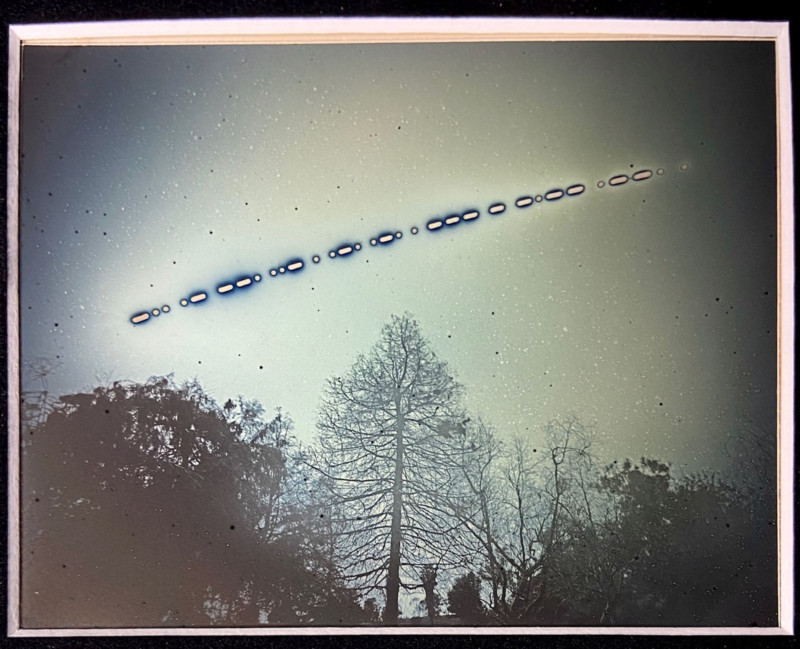

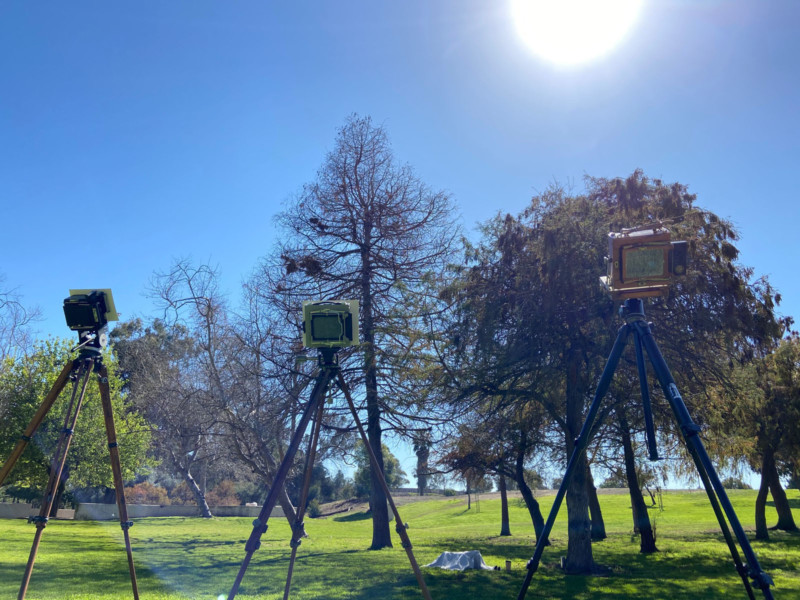
Coincidences
History and energy are interesting things. As some readers may be aware, while Niepce and Daguerre were working out their method of capturing the image inside camera obscura via chemical means, a number of other people around the world were also either just thinking about it, or actively working on their own processes of doing so.
Light sensitivity of silver salts was widely known, and in fact, Morse himself had experimented with this phenomenon some years prior to 1839. He actually succeeded in getting a negative image but gave up before it occurred to him to simply reverse it one more time into a positive. Of course after seeing daguerreotypes and returning to the US, Morse waited for the release of the process, learned it, and for a brief time opened a daguerreotype studio.
While working on this project, I was fairly sure I was the first to not only try sun trails via the daguerreotype method but also to employ Morse code. Just two days ago, I posted one straight sun trail image in a social media group dedicated to the modern practice of daguerreotype. Imagine my surprise when I soon saw a comment by Mate Bakody, a practitioner from Hungary, saying that not only did he try sun trails before, but also, even without knowing that I already had those Morse code plate, saying he has tried to do the same just last year! Amazing: after 182 years, we both tried it at nearly the same time.
During a brief conversation, Mate mentioned that he was never too happy with his sun trials and especially the Morse code ones, as he couldn’t quite work out the timing and how to actually do those exposures. His work though is very diverse and inspiring, and he has explored Morse code in wonderful ways I would have never thought of.
Your Plate
Would you like to have a unique daguerreotype plate with a custom Morsiple exposure? Such a plate, with a name of a loved one or a positive affirmation, is surely one of the most unique objects one can possess. If this thought intrigues you, do feel free to drop a message to thephotopalace@gmail.com and I’ll be glad to work out the details. Because I used multiple cameras and sometimes more than one plate worked out to my liking, I also have available a few excellent versions plates not seen here, but which have the same messages as posted above.
About the author: Anton Orlov is an analog photographer and the man behind The Photo Palace, a 35-foot school bus that has been converted into a darkroom and presentation area for educational and artistic purposes. He previously created a transparent camera and the world’s smallest tintypes. Visit his website for more of his work and writing. This article was also published here.